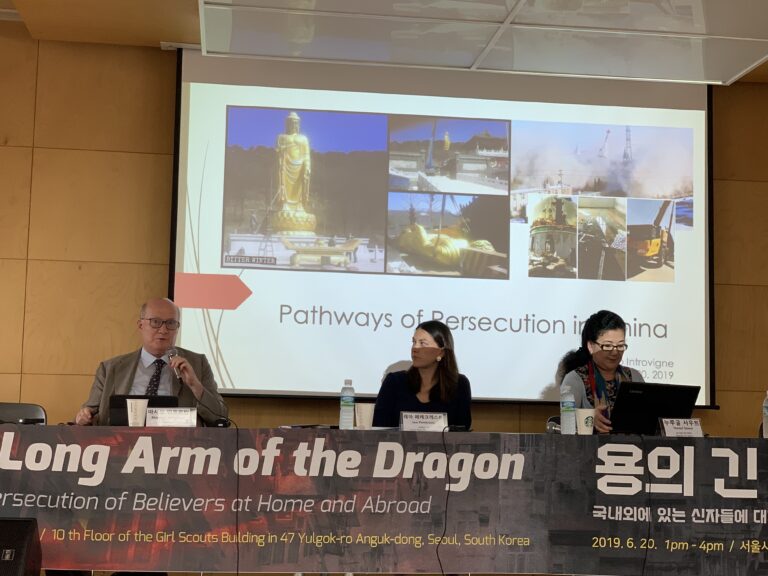The situation in Xinjiang is getting worse rather than better. It is time for the international community to speak up.
by Cameron Boyle

In China’s Xinjiang region, the Uyghur people are mercilessly persecuted by the state. Every aspect of life is under constant surveillance, reducing day-to-day life to a never-ending cycle of paranoia. Police use a mobile phone application to access a plethora of personal information, while CCTV cameras are equipped with face and voice recognition technology, ensuring that any behavior deemed “illicit” can be stamped out immediately.
Thousands are detained in “vocational training centres,” aka transformation through education camps, facilities more akin to internment camps where torture and interrogation are commonplace. And most harrowingly of all, reports of forced sterilization have emerged, indicating a calculated attempt to ethnically cleanse the Xinjiang population. It is a situation that harks back to the darkest days in human history.
Historical Origins
The Uyghurs are a mostly Turkic-speaking Muslim ethnical group from the Central Asian region, the largest population of whom live in Xinjiang. Their Islamic faith is hugely significant to the ongoing catastrophe, as the Chinese government attempts to justify its actions by claiming they are necessary to combat religious extremism. In reality, the reasons for the persecution are notably more complex, and are inextricably entwined with the geopolitical history of the region.
Although Xinjiang was annexed by the People’s Republic of China in 1949, Beijing does not look upon the territory as a colony. For Muslim minorities in the region however, the opposite is true, and many have resisted Beijing’s rule and campaigned for independence in a bid to reinstate their national sovereignty.
The Chinese government detests such behavior, and wishes to eradicate any notion that the Uyghurs are not only different to the Chinese majority, but have a right to self-determination. During the 1980s and 1990s, intense crackdowns forced large numbers of Uyghurs to seek asylum abroad, and state-sanctioned discrimination has escalated ever since.
Surveillance Techniques
As touched upon, surveillance techniques in Xinjiang are inhumanely invasive. Cutting-edge technology is deployed to control and subjugate the populace; in certain cities, such as Kashgar, facial recognition cameras are located everywhere, and police checkpoints are situated every few hundred yards, placing the most routine of actions under forensic observation.
The shift towards such draconian methods intensified when Chen Quanguo became the Communist Party leader of Xinjiang in 2016. Following on from his brutal tenure as leader of Tibet—which saw monasteries destroyed and half a million Tibetans sent to labour camps—Quango used a “grid-management system” to divide Xinjiang into squares of around five hundred people each. A police station is located within each square, the sole purpose of which is to “closely monitor” citizens by searching their mobile phones, taking their photographs and fingerprints, and frequently checking their identification cards.
All personal information obtained via these methods is then stored on an enormous database known as the Integrated Joint Operations Platform, which uses an algorithm to compile lists of “suspicious individuals.” As stated in government documents released by the International Consortium of Investigative Journalists (ICIJ), more than 15,000 Xinjiang residents were sent to the “vocational training centres” in a seven-day period due to being flagged by the algorithm.
Vocational Training Centres
Whilst information regarding exactly what occurs inside the centres is difficult to obtain, they are certainly not what their name suggests. Those detained are subject to “political reeducation,” a process that involves daily attempts at expunging minority culture, language, and tradition.
Mandarin classes are mandatory, pledges of loyalty to the Chinese Communist Party (CCP) are compulsory, and forcible renouncements of Islam are also thought to occur. Further to this, a number of detainees reported being “tortured and subjected to sleep deprivation” during interrogations, while others described “prison-like conditions “ with microphones and cameras monitoring “every move and utterance.”
According to the Congressional-Executive Commission on China, the Chinese government has forcibly detained at least one million Uyghurs in total—the majority of whom have neither been charged with a crime nor had access to legal representation.
Forced Sterilization
One of the most frequent reasons why Uyghurs are sent to the centres is “having too many children,” making the state’s desire to suppress the Uyghur population abundantly clear. Yet recently, their efforts in this regard have grown even more barbaric, with Uyghur and other minority women experiencing forced sterilizations, forced abortions and intrauterine device insertions—a state of affairs described by experts as “demographic genocide.”
These methods can be seen as an abhorrent extension of a longstanding attempt to dilute the Uyghur population. In 1949, Uyghurs comprised 76% of the region’s population, with Han Chinese accounting for just 6.2%. Yet, following large numbers of the Han Chinese majority being encouraged to relocate to the region, this has dwindled to just 42%.
In light of the horrors forced upon the Uyghurs, it is of the utmost importance that the international community works together to find a positive and lasting solution. The situation constitutes an unprecedented human rights catastrophe, with the Uyghurs targeted purely because they refuse to conform. It simply cannot continue.
Source: Bitter Winter












